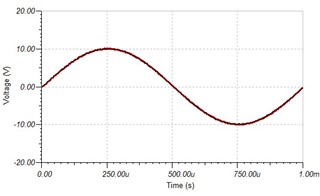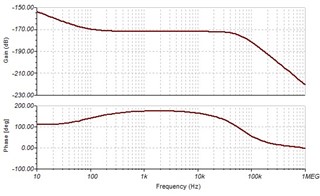I'm trying to build a motor driver using the DRV2511. It needs to be DC coupled and I'd prefer to work out the details in TINA before creating a protoboard. Using the TI reference design "slom423.tsc" I get the following results which don't agree with each other. For transient response the system shows a voltage gain of 10, or 20db, exactly as expected for the default FS0-2 gain settings. Input is 1V and output is 10V.
However, looking at the ac response gives a magnitude of -172db at 1kHz (equal to voltage gain of 2.5e-9) which makes no sense to me. I would expect a magnitude of 20db.
Any idea what causes this error and how to correct it? This is needed to develop the proper control loop.

